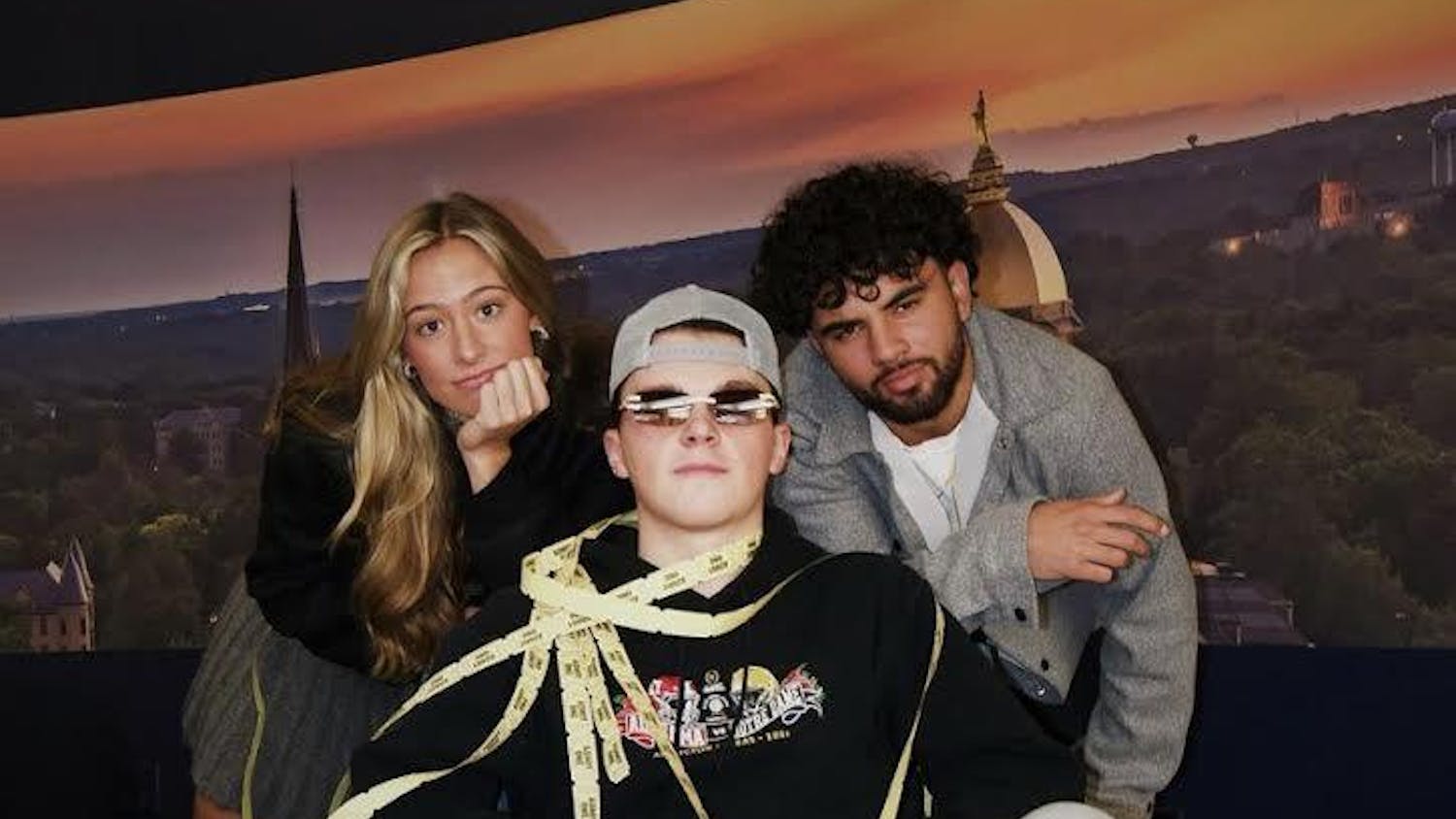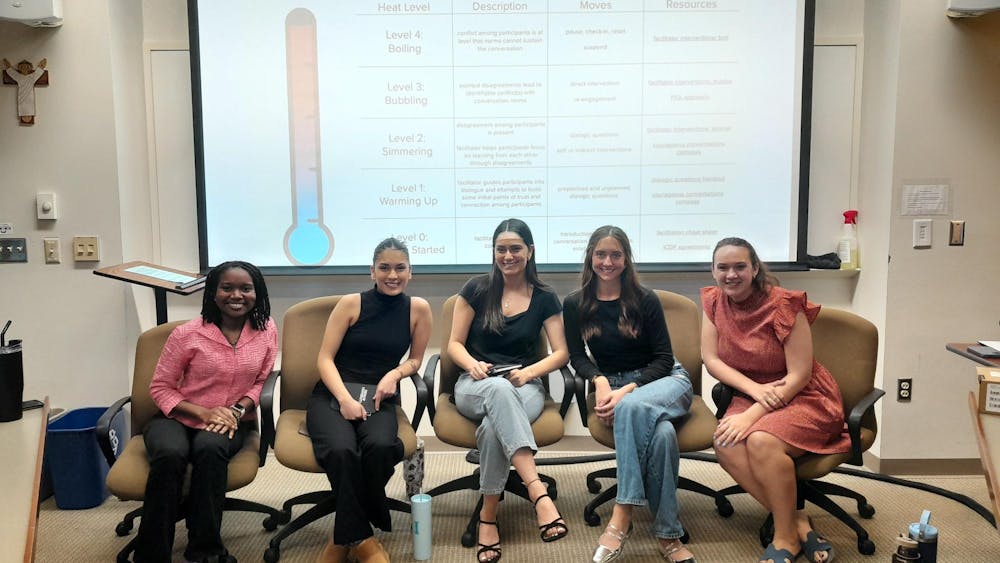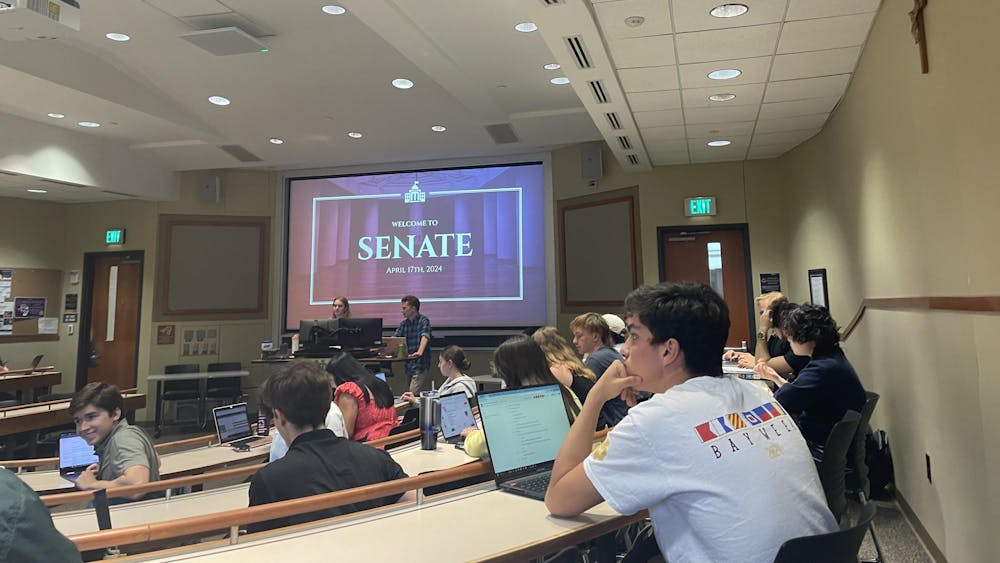Explore Celtic Iron Age ruins? Check. Examine six-thousand-year-old Neolithic agricultural land? Check. Survive a gale that suspended the ferry system? Check.
Rain or shine, 12 Notre Dame students in the Archaeology of Ireland class ventured out each day during Fall Break to study the interdisciplinary facets of archaeology in coastal Ireland.

Professor Ian Kuijt, who has taught the course for the past five years, said the trip offered students an experience of the country far more intensive than that available to casual visitors.
"[There is] an adaptive, spontaneous aspect to it. You see sites off the beaten track, not ones you'd take a tourist bus to," Kuijt said. "Most are in remote locations and [students] probably won't ever see them again."
Kuijt planned this year's trip in collaboration with Director of Irish Studies Chris Fox and received funding from Richard Sweetman, '58.
Kuijt, accompanied by John O'Neill, a professor at Ireland's Carlow College, led students in exploring five to eight sites each day. Each student took charge of a site, preparing a tour with write-ups and maps.
"When we went to the site, [the student site leader] had to wear a very attractive red safety vest and give a tour for 30 to 40 minutes. They were essentially in charge of that educational moment," Kuijt said. "That person always got to go on the site first, because it was theirs."
Some of the sites included areas where Kuijt had done archeological surveys in the past, including Omey Island and Inisbofin. Kuijt and his students were prevented from visiting one of their planned sites by an intense gale that shut down the necessary ferry.

Kuijt said the students dealt well with the severe weather conditions.
"We went out in full rain gear but were getting sunburned on our faces and hands. It's the roughest I've seen it in five years," he said. "But they took great advantage of it in good spirits, which isn't something all people can do."
Junior Ryan Lion said the opportunity to employ the skills and knowledge he learned in class made the trip worth the difficult weather and sparse sleep.
"Archeology lets you contextualize a period. You can read about it and have it ingrained in you, but when you actually stand in the remains of a building from the sixth century, it really impacts you," he said. "It was really active, involved learning."
Lion said he was drawn to the Portumna Workhouse site because of his interest in health.
"It provided information on the health of Irish workhouses and the diseases affecting the people living in them at that time. People suffered from cholera and typhoid," he said. "The infirmary was understaffed and even those few workers lacked a medical background."
Lion and his classmates wrote papers and constructed posters on the sites they visited. He said the students' firsthand experiences of the sites will enrich their projects more than traditional research.
"We'll do a lot of secondary research for the papers and posters, including statistics and any reading relevant to the topic," he said, "but primary observation is important for insight — we're not just spitting out academic blurbs."
Once the posters are completed, Kuijt said they will be exhibited at Flanner Hall, where they will be judged by an Irish researcher.
Beyond the expanded knowledge about Irish culture and archeology, Kuijt said the students will benefit from the development of communication and presentation skills required by the projects associated with the trip.
"They get this local experience, a hidden Ireland with some zany instructors, but they get a whole range of transportable skills as well," he said. "That's what's paying off."
Lion said the trip offered an understanding of the course's subject beyond what he could learn from lectures or textbooks.
"We got to think like archeologists rather than just reading about it," he said. "I just loved having the chance to learn about the unique identity of Irish culture and how diverse it is within its own national boundary."












